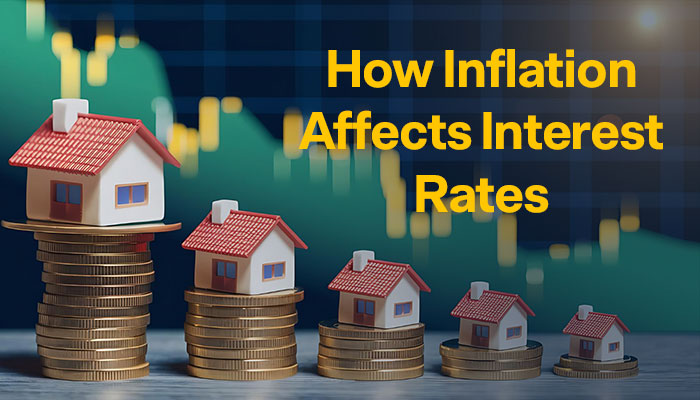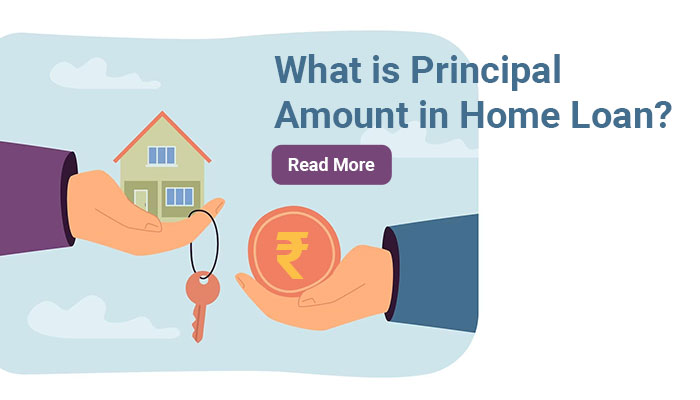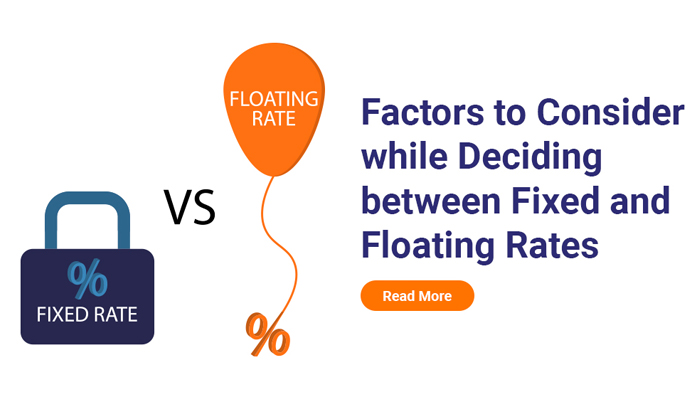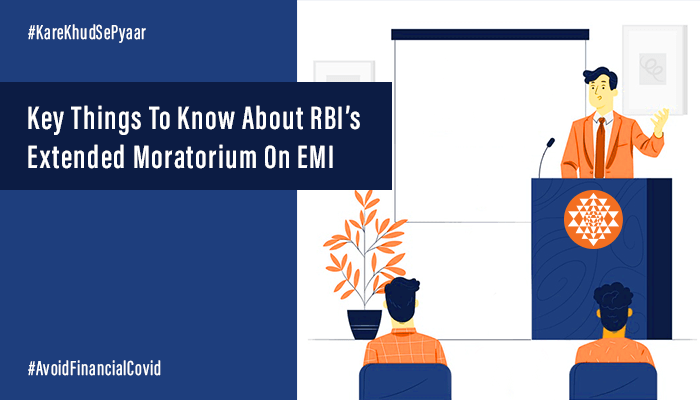How does Inflation Impact Interest Rates?

Inflation is a word we often hear when discussing the economy. Simply put, it’s the gradual rise in prices over time, which means the same amount of money buys less than it used to. While a marginal inflation rate signals a healthy, growing economy, it has a ripple effect, especially on interest rates.

Grasping this connection is important for everyone—from individuals managing their finances to businesses planning investments and policymakers shaping economic strategies.
Inflation: Why do prices rise?
Inflation occurs when the demand for goods and services surpasses supply or when production costs rise. There are usually two types of inflation
- Demand-Pull Inflation: This happens when consumer demand exceeds the available supply. For instance, a booming economy with higher disposable incomes often leads to increased spending, pushing prices upward.
- Cost-Push Inflation: Rising costs of raw materials, labour, or energy can drive up the price of goods and services. This type of inflation is common during supply chain disruptions or geopolitical crises.
Other contributors include government policies, changes in exchange rates, and global economic trends. While inflation is inevitable in any growing economy, understanding its triggers is key to managing its effects.
Is Inflation good or bad?
Inflation is often viewed through a binary lens, but the impact of inflation isn’t entirely black or white.
- The Good: Moderate inflation, typically around 2-3%, signals a healthy economy. It encourages spending and investment as people anticipate rising prices in the future. Additionally, it can reduce the real value of debt, benefiting borrowers.
- The Bad: High inflation erodes purchasing power, making essentials less affordable for consumers. It disproportionately affects low-income households who spend a larger share of their income on necessities.
- The Ugly: Hyperinflation—an extreme form of inflation—can destabilise economies. Countries like Zimbabwe and Venezuela have witnessed how runaway inflation devastates savings and paralyses economic activity.
Thus, while some inflation is beneficial, excess of it can cripple an economy, underscoring the need for careful regulation.
Effects of Inflation on Interest Rates
The interplay between inflation and interest rates is at the core of monetary policy. Here's how the inflation rate influences interest rates:
- Rising Inflation Leads to Higher Interest Rates: When inflation rises beyond acceptable levels, central banks like the Reserve Bank of India (RBI) intervene by increasing interest rates. This makes borrowing more expensive, reducing consumer spending and cooling demand.

- Lower Inflation Encourages Reduced Interest Rates: In contrast, during periods of low inflation or deflation, central banks may lower interest rates to stimulate economic activity. Cheaper borrowing incentivises investment and spending, boosting growth.
- Real Interest Rates and Inflation: Real interest rates, which adjust nominal rates for inflation, highlight this relationship. For example, if the nominal interest rate is 7% and inflation is 5%, the real interest rate is only 2%.
How Inflation Directly Affects Home Loan Interest Rates
When inflation rises, central banks increase policy rates, such as the repo rate, to control liquidity in the market. This directly impacts home loan interest rates, making them higher. For borrowers, this means increased EMIs or longer loan tenures, affecting affordability. On the other hand, when inflation drops, central banks may lower rates, resulting in more favorable terms for home loan borrowers.
Economic impact of changing Interest Rates due to Inflation
Changes in interest rates triggered by inflation ripple across the economy, influencing various stakeholders:
- Borrowers and Lenders: Rising interest rates increase the cost of loans, affecting mortgages, car loans, and business credit. Borrowers face higher EMIs, while lenders benefit from greater returns.
- Businesses: Higher interest rates escalate borrowing costs, which can dampen expansion plans and impact profitability. Conversely, lower rates create favourable conditions for business growth.
- Investments: Inflation-driven interest rate changes alter the appeal of investment avenues. For instance, when rates rise, fixed-income instruments like bonds become more attractive, while equity markets may face pressure.
- Consumers: Rising interest rates reduce disposable income as loan repayments become costlier, curbing consumer spending. Conversely, falling rates encourage spending and investments, spurring economic activity.
Managing Interest Rates and Inflation: RBI’s Monetary Policies
The Reserve Bank of India (RBI) uses monetary policy tools, primarily interest rate adjustments, to manage inflation rates and maintain price stability. The repo rate (the rate at which commercial banks borrow from the RBI) is a key instrument.
- Contractionary Monetary Policy: When inflation is high, the RBI may increase the repo rate, making borrowing more expensive and reducing the money supply. This helps to curb inflation.
- Expansionary Monetary Policy: When economic growth is slow, the RBI may decrease the repo rate, making borrowing cheaper and increasing the money supply. This can stimulate economic activity.
Final Thoughts
Inflation and interest rates play a key role in managing the economy. The inflation rate measures the rise in prices, but if it gets out of control, it can have serious consequences. Adjusting interest rates helps regulate inflation while maintaining economic stability.
When inflation leads to higher interest rates, finding a home loan with favourable terms becomes crucial. IIFL Home Loans provides competitive interest rates, flexible repayment plans, and easy processing to help you achieve your goal of owning a home. Start your journey towards smart financial planning—check out IIFL Home Loans today!
FAQs
Q1. Why does inflation lead to higher interest rates?
Rising inflation reduces the purchasing power of money. To control this, central banks increase interest rates, making borrowing costlier and reducing excess demand.
Q2. How does inflation affect savings?
High inflation erodes the value of savings as goods and services become costlier over time. However, higher interest rates on deposits can help offset this effect.
Q3. What is the role of the repo rate in inflation control?
The repo rate is the rate at which banks borrow from the RBI. By increasing the repo rate, the RBI reduces liquidity in the market, helping to curb inflation.
Q4. How do businesses adapt to inflation-driven interest rate changes?
Businesses may delay expansion plans, renegotiate loans, or adjust pricing strategies to cope with increased borrowing costs caused by rising interest rates.
Q5. Can inflation ever be beneficial?
Moderate inflation can encourage spending, reduce the real burden of debt, and reflect a growing economy. It’s only when inflation spirals out of control that it becomes problematic.
Tags
Disclaimer: The information contained in this post is for general information purposes only. IIFL Home Finance Limited (including its associates and affiliates) ("the Company") assumes no liability or responsibility for any errors or omissions in the contents of this post and under no circumstances shall the Company be liable for any damage, loss, injury or disappointment, etc. suffered by any reader. All information in this post is provided "as is", with no guarantee of completeness, accuracy, timeliness, or of the results, etc. obtained from the use of this information, and without warranty of any kind, express or implied, including, but not limited to warranties of performance, merchantability, and fitness for a particular purpose. Given the changing nature of laws, rules, and regulations, there may be delays, omissions, or inaccuracies in the information contained in this post. The information on this post is provided with the understanding that the Company is not herein engaged in rendering legal, accounting, tax, or other professional advice and services. As such, it should not be used as a substitute for consultation with professional accounting, tax, legal or other competent advisers. This post may contain views and opinions which are those of the authors and do not necessarily reflect the official policy or position of any other agency or organization. This post may also contain links to external websites that are not provided or maintained by or in any way affiliated with the Company and the Company does not guarantee the accuracy, relevance, timeliness, or completeness of any information on these external websites. Any/ all (Home/ Loan Against Property/ Secured Business Loan/ Balance Transfer/ Home Improvement Loan/ NRI Home Loan/ Home Loan for Uniformed Services) loan product specifications and information that may be stated in this post are subject to change from time to time, readers are advised to reach out to the Company for current specifications of the said (Home/ Loan Against Property/ Secured Business Loan/ Balance Transfer/ Home Improvement Loan/ NRI Home Loan/ Home Loan for Uniformed Services) loan.
 Login
Login

















